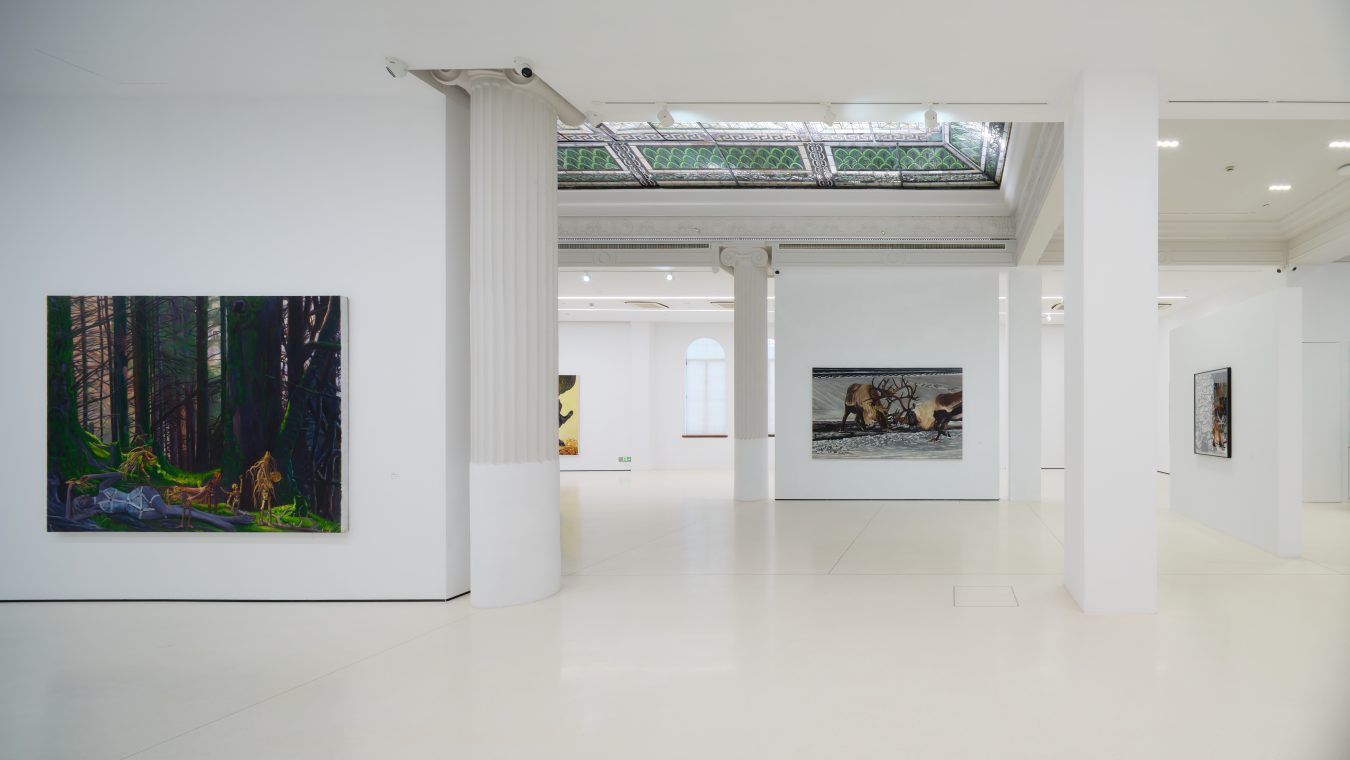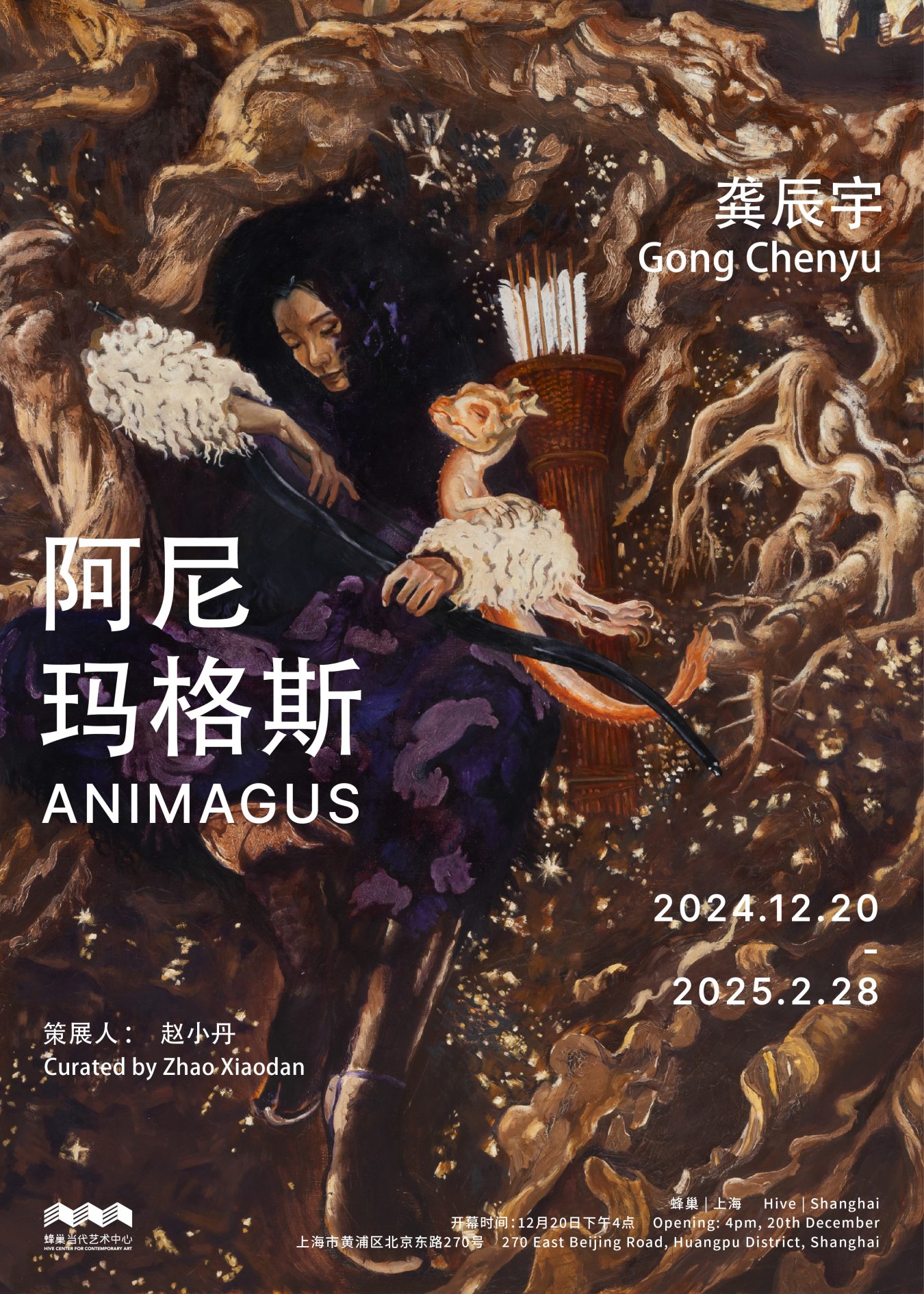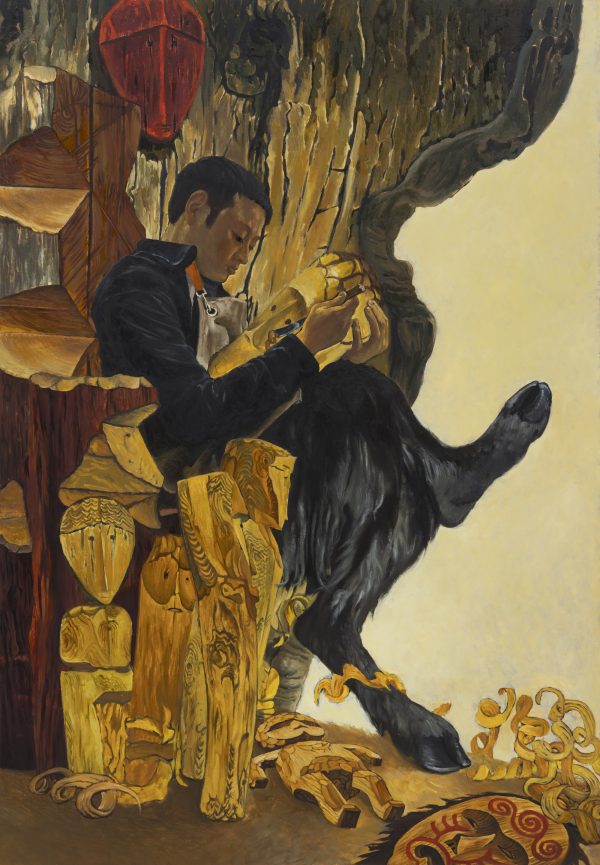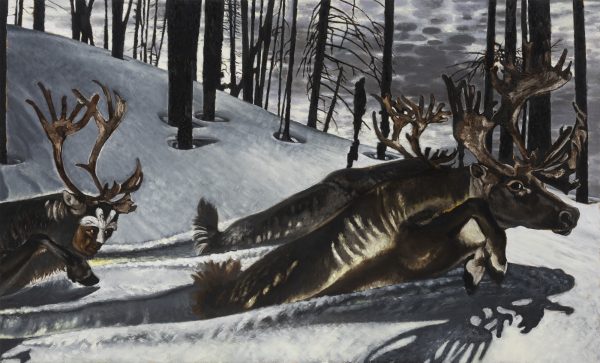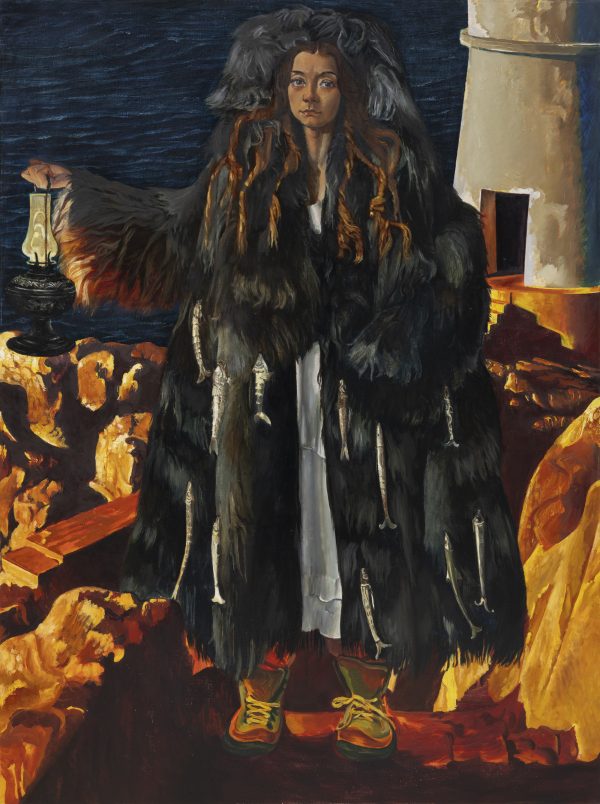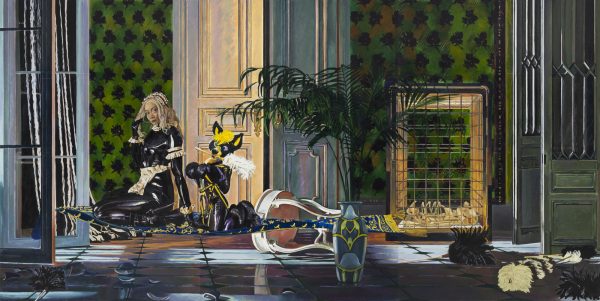Hive Center for Contemporary Art is pleased to announce the presentation of Gong Chenyu’s upcoming solo exhibition, “Animagus”, opening at Hive Shanghai on 20 December 2024. Following “Display” (2015), “Ice Chilling” (2018), and “Youth in the Otherland” (2022), this marks the artist’s fourth major solo exhibition with the gallery and reflects on Gong’s wide-ranging interest in anthropology and ethnography, as well as his profound examination of existential circumstances of humanity in the post-pandemic time. The artist’s painting practice serves as a vision that emerges from the very fundamentals of reality to reveal the ambiguous, contradictory, and perplexing core of will in human nature. This exhibition is curated by Zhao Xiaodan; it is on view until 22 January 2025.
The title of the exhibition, “Animagus”, a compound word invented by J.K Rowling in her Harry Potter series, refers to the shape-shifting terminology used by wizards in the subject of Transfiguration. The process of practising such an acquired power conceals many thrilling variables and challenges. This idea is introduced into this exhibition not only because the word and its origin inherently carry a certain accessibility to a mysterious and hidden world, but also because of its compatibility with the theoretical structure of Gong Chenyu’s most recent works. From forest to tundra and then to ice field, the landscapes in the paintings rotate as if in the elaborate Hall of Mirrors, as if the artist is tracing back along Heilongjiang, his birthplace, to its upper reaches and further north into Siberia, to capture more spiritual inspiration from his ancestry.
Through the study of perspectivism in anthropology, Gong Chenyu consciously constructs in his works a pluralistic cognitive system different from the anthropocentric one. In Gong’s consequent painting expedition, the turbulent psychological dilemmas and moral shackles of reality become his implicit motives to keep on marching. In his works, the shifting of perspectives accelerates the breakdown, diversion, and dissolution of the past perceptions of the artist who intentionally remains elsewhere, as an observer. In the process of the departure and return of consciousness and reverie, the artist’s will and ability to perceive the world continue to be reinforced. For Gong, the transfigured subjects in the images and the unfolding relational narratives do not only signify a fluidity in identity but that in the process of continuous commitment and withdrawal, the empirical world grounded in reality has been replaced by a conceptual one that transcends the present.
As the exhibition unfolds with Flying Carpet (2022), the layout of three doors not only expands the temporal and spatial dimensions of the painting, but the flowing curtain and cooling moonlight pouring onto the ground from the left window also emphasise a sudden occurrence of this moment. Tracing along the broken vase, fallen end table, and scattered feather dusters, when the viewer finally returns to the exotic flying carpet with distinctly mythical references, the maid in her socially symbolic costume and a companion furry dog in a leather bodysuit seem to be bidding the viewer farewell. However, when we shift our attention to the fringed tassels of the flying carpet, a golden cage shaded by greenery and a reclining complete animal skeleton, they signal more unexpected information. Through a structural reset, the maid, who has ended her daytime labour, and the dog, imprisoned in the cage during the day, escape at night to break the enforced restraint on their actions. In connection, Flying Carpet is a prompt retreat from the war narrative of “Youth in the Otherland”, like a paratrooper’s quick descent into the vortex of reality consisting of the nomadic hunter-gatherer people, the NEETs¡ , and the Watchers.
Similar to Danish anthropologist Rane Willerslev’s observation¡¡ of the Yukaghir hunter Old Spiridon’s disguise in the opening paragraph of Soul Hunters, Gong Chenyu’s work Travel Companion (2024) fittingly presents such a moment of hunting: two moose travelling together wade through the heavy snow, and the hunter disguised as a reindeer quietly follows behind. Gong borrows the snowy Idaho landscape from Matthew Barney’s film Redoubt¡¡¡, in which the goddess of the hunt Diana’s trapping and hunting of wolves, echos the scene of the nomadic hunters’ cautious breath-holding in Gong’s work. Between imitation and entrapment, the artist defines the hunter as somewhere between human and inhuman. In another work that immediately follows, The Fight by the Stream (2024), the MacGuffin railroad tracks at the top of the image suggest the artist’s birthplace; he deliberately places the antlers from the reindeer fight in the centre of the image, reinforcing the sense of separation by transforming the form with warm and cold tones. Mixed emotions are like ice floes drifting at the bottom of the image, in which the artist has embedded the decline and lamentation of the nomadic people, to stay or to leave, perhaps this conflict is not only about the reindeer but also about the community.
As we temporarily traverse the deep forest of reveries, we arrive at the cave of the NEET people on the flexible wings of a bat. The Bat’s Reward (2024) and The Bat’s Reward 2 (2024) attempt to present, through a double vision, the collective division submerged in a special period of time. If the former expresses the active supply from the outsider, the latter reveals the individual’s voluntary severance of social ties with the collective, entering a state of existence that deviates from the prevailing trajectory and values in the self-established sanctuary. Meanwhile, the artist has deliberately granted the bat the identity and characteristics of a knight, in an attempt to immerse the viewer in the world of Death Stranding¡v, a video game developed by Kojima Productions, where the bat-knight is like the game’s legendary deliveryman Sam, shoulders the responsibility of supplying resources and reconnecting the divided community in the post-apocalyptic landscape. When Garuda captured the chimpanzee, Darwin’s claimed collective ancestor of humanity, the reflection provoked by Bipedal and Quadrupedal Beasts (2024) extends beyond realistic challenges imposed by island rule. In his practice, the artist’s execution of a metamorphic rather than evolutionary perspective gradually dismantles the foundations of the complex reality in the perception of pluralistic tendencies.
At the end of this exhibition, we re-enter the residence of Pan the god of shepherds and nymphs, where the gods condemned as the past have returned to the forests of yesterday through the Soul Pool. Leaning on lush foliage, the god of shepherd plays the memories and sounds stored in the conch, and the species that surround him pause their chase and hide, resting and enjoying the feast under the shelter and blessing of divinity. If through Pan, the artist attempts to restore the rhythm that exists everywhere, achieving “a freedom of Pan” in his practice, nymphs connecting the nerve plexus with the vines of plants embody the contemplation of life and its vitality in a creative process. As slow and leisurely thoughts rise and fall with the dust of humanity, the manifestation of biology and spirituality becomes the genetic chain of Gong Chenyu’s practice. Passing through the conscious space of unmarked land, the artist’s works become a vehicle for him to explore the spiritual landscape, and along with wild thoughts and the wind in the woods, multiple realities are unfolded in the process of narration.
¡ NEET, an acronym for “Not in Education, Employment, or Training”.
¡¡ “Watching Old Spiridon rocking his body back and forth … The elk-hide coat worn with its hair outward, the headgear with its characteristic protruding ears, and the skis covered with an elk’s smooth leg skins, so as to sound like the animal when moving in snow, made him an elk; yet the lower part of his face below the hat, with its human eyes, nose, and mouth, along with the loaded rifle in his hands, made him a man.“ Rane Willerslev, Soul Hunters: Hunting, Animism, and Personhood Among the Siberian Yukaghirs (University of California Press, 2007).
¡¡¡ Matthew Barney, Redoubt, 2018. 134’03”. The film was on view at UCCA in 2019.
¡v Death Stranding is an open-world action, adventure game developed by Kojima Productions and published by Sony Interactive Entertainment. It was first released in 2019.






